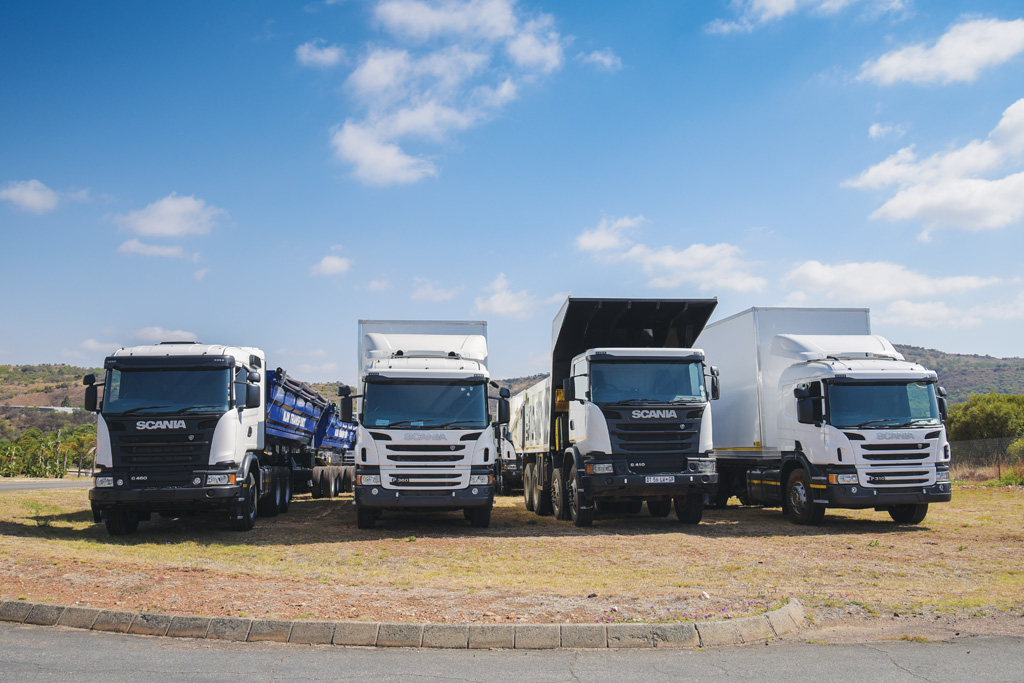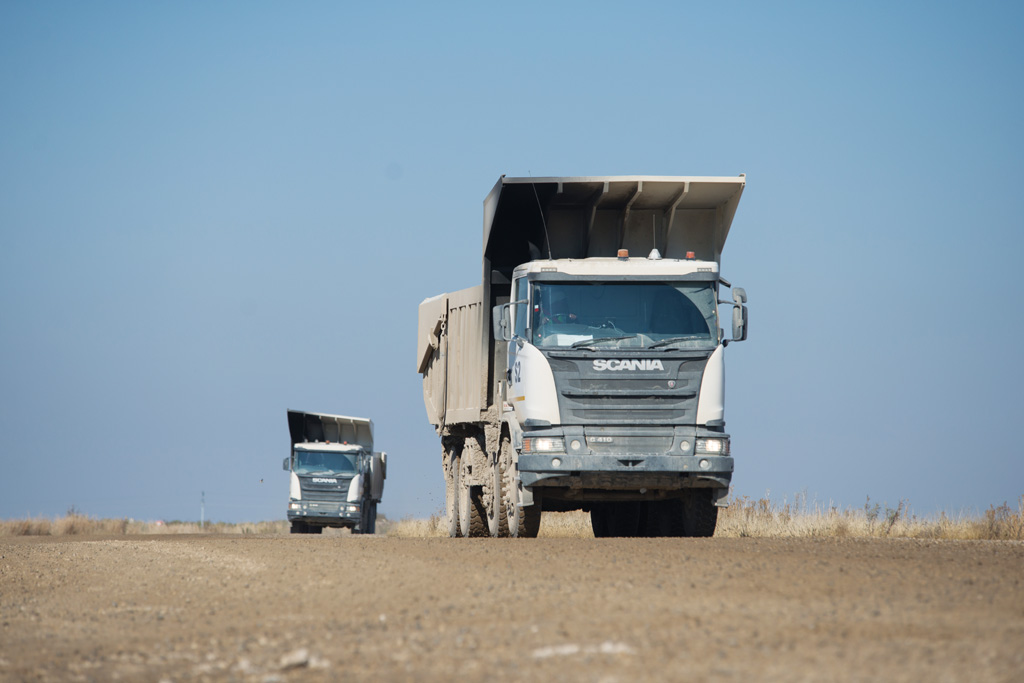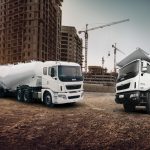Braving new markets with trusted strategies

After a successful 2017, Scania South Africa has its eye on new markets in 2018, while keeping most of its cards close to its chest.
Scania South Africa had a very busy 2017. It successfully introduced its F-type chassis for commuter buses, held its own in the fluctuating South African market, introduced its heavy tipper to the mining industry and demonstrated its application strategy – which takes total transport solutions to the next level.
However, the company also battled the tremendous storms that afflicted the Durban port, endured political unrest in southern Africa that affected exports, and battled its fellow global divisions in the race to fill orders.
Raimo Lehtiö, MD of Scania South Africa, recalls: “All our parts and vehicles are delivered to Durban in containers. With the damaged cranes, caused by the October storms, our deliveries were affected. One vessel had a gearbox failure and was delayed for a very long time. There were 90 Scania vehicles in parts on the affected vessel.”
Political unrest in Zambia and Malawi, together with the removal of President Robert Mugabe in Zimbabwe, resulted in a big drop in exports for many South African companies. Scania was no exception.
“However, Scania did well in Namibia and Botswana and we will continue to grow our network and footprint in Mozambique. Unfortunately, conditions in Zimbabwe, Zambia and Malawi remain more challenging than ever,” says Anders Friberg, GM of vehicle sales and exports at Scania South Africa.
Alan Hugo, GM of bus and coach at Scania South Africa, adds: “At the end of November 2017, certain export markets were down by 75 percent.”
While the entire transport industry was affected by the Durban storms and political unrest in Africa, Scania South Africa also faced some unique challenges as a result of impressive international growth experienced by the brand.
“The part suppliers are struggling to grow as fast as the global Scania market. When there is this kind of global production, we have to fight for our share. Fortunately, Scania South Africa received all the vehicles and parts it was expecting,” Lehtiö notes.
Despite the challenges experienced in 2017, Lehtiö believes the year went according to plan.
He says: “It was a good year. The plan for Scania South Africa was to keep market share with a bit of profit. We were actually more worried at the beginning of 2017. We expected it to be a smaller market than in 2016, but it was very much the same. It was a small, positive surprise. We achieved exactly what we wanted.”
Hugo adds: “Good teamwork and a sound strategy really paid off and we are pleased with our results.”
The company performed especially well in the used-vehicle segment, which was at an all-time high in 2017. While Scania South Africa aims to keep market share in its established markets, such as the long-haul segment, it also has set its sights on new potential markets.
“We are going to start with the construction industry. Scania South Africa is slowly taking market share with its ready-built vehicles for short deliveries. Currently, it has roughly six-percent of the market, but the aim, of course, is to grow,” Friberg explains.

He notes that the tipper and mixer vehicle segment in the construction industry has the biggest potential for growth. Scania aims to grow its market share with its ready-built tipper and mixer vehicles designed for short deliveries.
“Mining customers know what they are talking about when they discuss total cost of ownership. They know exactly how much it costs to run a vehicle per tonne. With the new 40-t payload, heavy-duty tipper from Scania, the running costs for the mining companies is reduced by up to 25 percent compared to the yellow machines. The demo unit is fully booked for the next four months,” says Friberg.
He adds: “The only challenge with the mining industry is that many decisions are on hold, due to current political instabilities. However, with the demo unit, we are building relationships with customers for the future.”
The original equipment manufacturer (OEM) is also looking at the various applications for different vehicles in all the transport segments. Lehtiö explains that the application strategy looks at the vehicle performance, fuel consumption as well as how well it operates in a segment to fulfil the application for which it was designed.
He uses the mining industry as an example: “Our customers in the mining industry are noticing that this kind of heavy-tipper vehicle doesn’t need very strong and wide roads. The quality of road construction required for these vehicles is a third of what is needed for heavy yellow machines.
“The application strategy covers much more than the vehicle and its fuel consumption. Scania offers a total transport solution, but also works with its customers to find the right solutions for their specific requirements.”
Friberg adds that his team in the trucking segment, for example, has support managers in sustainability, construction and mining working to support the retail division. He says: “We have increased our expertise in different applications to give even more support to our customers.”
The Scania South Africa team emphasis that the culture and strategy of being a trusted OEM offering a total transport solution, will remain the core of the business.
“The end consumer is becoming more aware of cost and is looking for a comprehensive transport solution to reduce the total cost of operations and increase revenue. Scania focuses on providing that solution and value to its customers,” says Hugo.
He adds that the departments within Scania work closely together to offer the right blend of services to customers. Scania also gives its various divisions autonomy to make decisions, which allows quick decision-making ability on the right services for its customers.
Hugo stresses the importance of the investment by Scania into research of customer needs.

“It is very important for us to stay abreast with what the customer values in terms of products and services. It is important for Scania to evolve so that it stays the market leader and pioneer in the total transport solution segment,” he states.
The total transport solution offer by Scania includes a driver training programme in which drivers learn to best utilise the vehicles for which they receive accreditation. Scania has its own programme and also works with clients that have their own driving schools to enhance their driver training.
Hugo notes: “In this programme, called train the trainer, we empower the heavy-vehicle driving school trainers to cover a lot more with the drivers in order to offer the high level of quality that Scania enforces.” These programmes will be continued in 2018.
Although Scania South Africa has big plans, the team is not expecting big economic growth in 2018. “We expect approximately the same growth in the transport industry as in 2017. Anything above that will be another positive surprise,” Lehtiö states.
The Scania team is rightfully excited about the new ventures, but is also determined to keep some of the developments for 2018 close to its chest. Hugo adds from the bus perspective: “There are also other plans in the pipeline about which I don’t want to divulge too much now, but they will focus on the front engine chassis and will target the intercity and cross-border segment.”
The transport industry is eagerly awaiting the surprises that lie in ahead from this top OEM. Only time will tell…
Published by
Focus on Transport
focusmagsa




